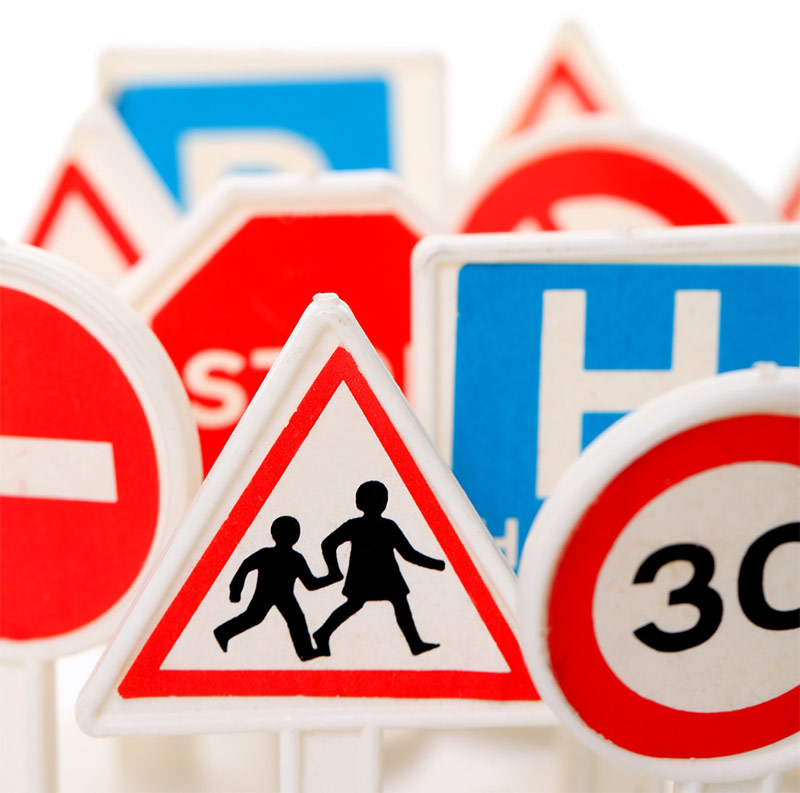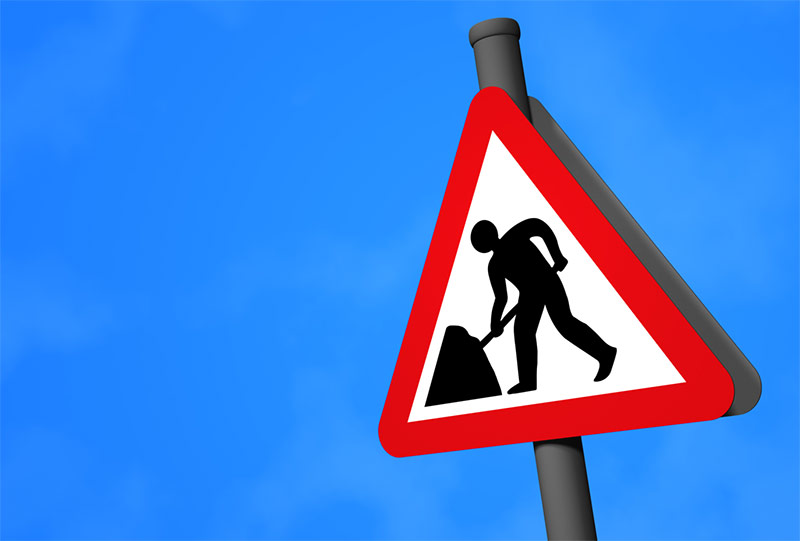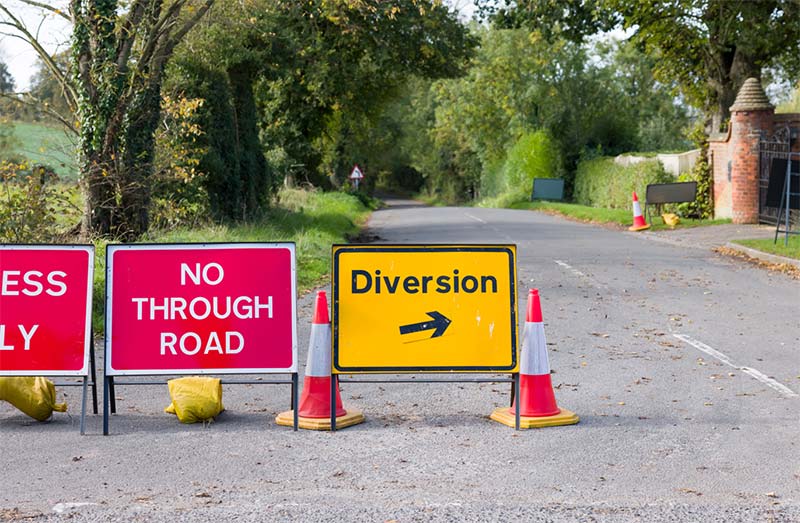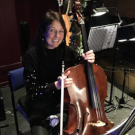Eyes on the Road - A guide to road signs
From the iconic and instantly recognisable to the more obscure, giggle-inducing or eyebrow-raising, road signs are an integral component of highways, byways and motorways worldwide. As drivers, pedestrians or bikers, we're all familiar with STOP, YIELD or MEN AT WORK. But did you know that UK road signs have a fascinating history and a fundamental role to play?
A wide range of road signs are available that are not only super easy to erect and use, but they also comply with all the appropriate regulations for temporary road signs, AND they're proudly made in the UK!

A glimpse back in time
Road signs haven't always been easy on the eye or even very logical – which is not a good thing, considering they aim to save lives! The very first traffic signs were either extremely basic or just plain confusing. In Roman times simple stone columns alerted travellers that they were close to the city. Later, with the invention of the bicycle, we started to see the emergence of traffic signs as we know them because cyclists required signs that warned them of hazards and obstacles.
In the 1950s, road signs were a perplexing, hazardous mess of different symbols, colours and lettering. However, more and more people were getting cars. Thankfully, in the 1960s, graphic designer, Margaret Calvert, designed a completely new signage system for the UK's roads - turning the humble road sign into a British design classic.
Together with another graphic designer, Jock Kinneir, the two created new signs and remodelled existing ones (based on the European protocol of circles for commands, rectangles for information and triangles to warn) to standardise the network and even introduced two new typefaces, Transport and Motorway. Many of Calvert's illustrations, such as the 'Children Crossing' or 'Cow' pictogram, were inspired by her own life. Now that's a handy piece of trivia for your next Pub Quiz Night!

Road sign regulations
Road signs are highly regulated and controlled, and rightly so! Imagine if every town, city, or county erected their own signs willy-nilly? That would result in utter chaos!
Whether you've just started learning to drive or have held a license for many years, a thorough understanding of the Highway Code's traffic signs is an essential part of driving. A huge component of road safety is learning to interpret and use the various road signs.
Road traffic signs, signals and road markings need to be straightforward and easy to grasp in an instant. The Department for Transport produces regulations and guidance to ensure traffic authorities use traffic signs and road markings correctly. The Traffic Signs Regulations and General Directions 2016 (TSRGD) stipulate the designs and conditions of use for traffic signs to be officially placed on or near roads in England, Scotland and Wales.

Why are Road Signs so important?
1. They warn you about things that aren't that obvious
Traffic signs do more than just tell you the speed limit or when to stop. Temporary signs, such as ESE Direct's Road Closed sign or those around construction zones, alert road users to changes in their usual route or to watch out for people working. The Men At Work Road Sign is ideal as a temporary road sign for repetitive outdoor use, and this sign is available either pre-set into a stanchion or as a plain sign. Similarly, they might warn of hazardous activities such as tree-felling or trimming. This classic roll-up road sign warns drivers that work is taking place ahead, specifically tree cutting. Without this type of road sign, you may not be able to avoid dangerous obstacles in time and could come a cropper.
2. They provide consistent and reliable rules for all road users
If signs weren't consistent, it would be very tricky to know the right thing to do and travelling on the roads would be fraught with danger. Although there may not be any guarantee that everybody will adhere to these rules, there are severe consequences if they don't.
Rather than rely on words, road signs often use pictures to communicate a message, like highlighting to drivers that the right-hand lane of the road narrows ahead. This allows anyone to understand the meaning, even if they speak another language. Just as important on road signs are the colours - which are universally recognised. Red signifies stop, yellow implies you proceed with caution, and green means go.
3. Road signs keep drivers, pedestrians and cyclists safe
Driver safety is the most obvious benefit of traffic signs. Without them, drivers would be clueless as to when they should stop or yield or what speed to go. They would also be oblivious to upcoming obstacles. Whilst every driver is familiar with having to painstakingly memorise and apply traffic signs to pass that all-too-critical driving theory test; these signs also help to keep cyclists and pedestrians out of harm.
A classic roll-up road sign familiar to everyone is those directing 'Pedestrians' with a left directional arrow. Signs such as these inform pedestrians where they can safely cross a road and warn drivers of their presence. Road signs also enable cyclists to see where the bike routes are and if they should yield to pedestrians. By adhering to these signs, everyone can share spaces safely.
4. Traffic signs help you navigate to your destination
Even with the convenience of Sat Nav systems and Google Maps - we still rely on visual cues to get from A to B. Road signs provide valuable information about the distance you need to travel, when you need to take exits or turns, as well as street and landmark names. Traffic signs make travelling way less stressful and a lot easier.
So, from the humorous yet rather ominous ones such as 'I'd Turn Back If I Was You!' to the pointless 'Sign Not in Use' or even quirky animal-themed 'elephant/ tortoise/ crab/ penguin crossing' signs - to those that save millions of lives every day, road signs are indispensable.

Author Bio - Debs
Digital marketer, social media, content writer, musician, sloth-lover, tea-drinker.





